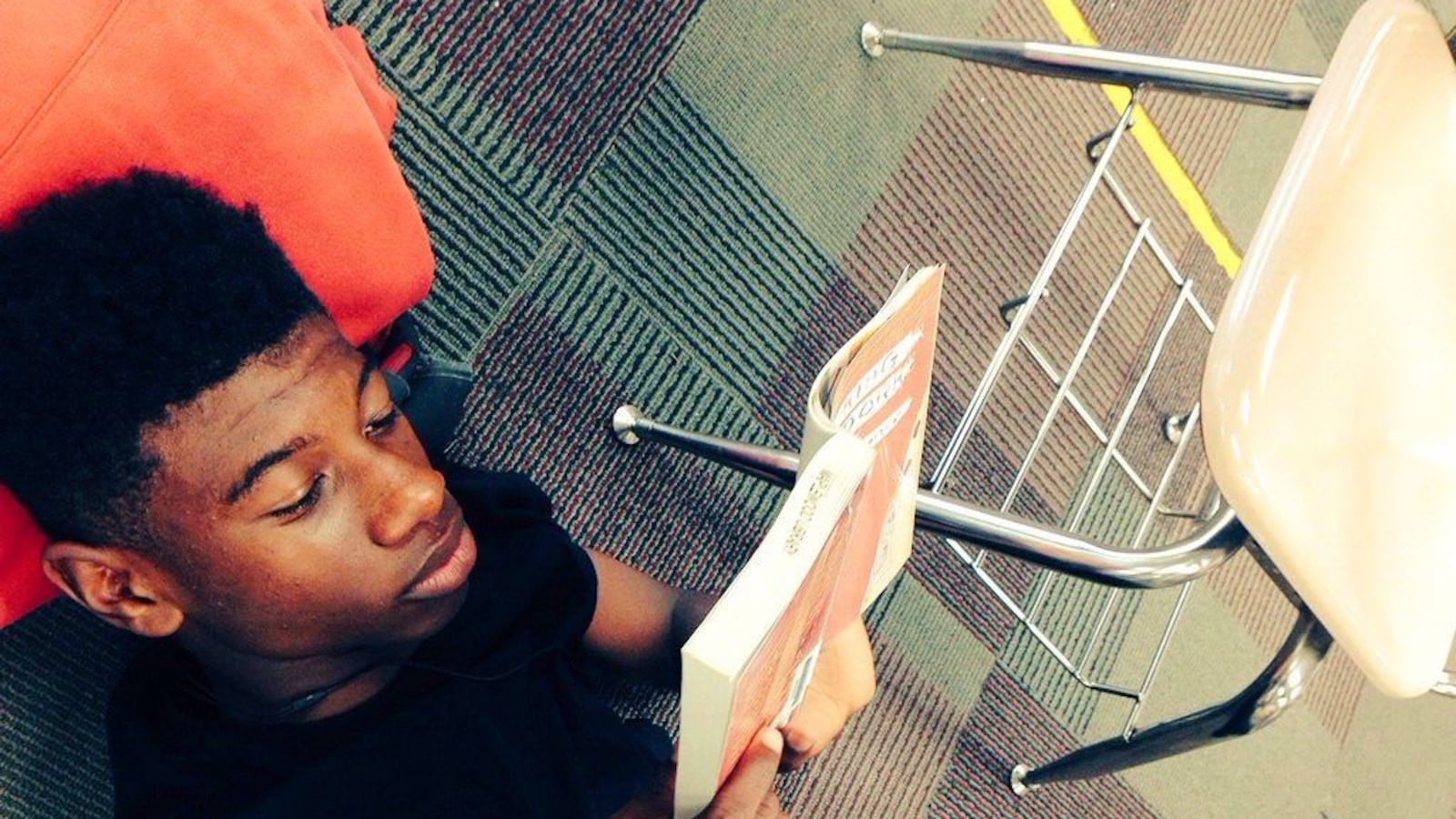As an English teacher, I believe there is tremendous power in having students reflect on their own reading habits. So after our 20 minutes of independent reading, I asked my ninth graders a few questions.
How often do you read? Do you enjoy reading more now than you did in the past? What challenges do you face as a reader? What can Mr. Amato do to help you succeed?
Their answers were honest and illuminating. They also made me realize how important it is for teachers to understand why many students aren’t reading as much as we (or they) would like so that we can work with them to find solutions.
Here are the top seven challenges students face as readers, according to a survey of approximately 100 ninth-graders at Maplewood High School, a high-poverty school in Nashville, Tenn.
1. Cell phone addiction.
This should come as no surprise. One student told me, “I stay on my phone 24/7.” Another added, “Whenever I see a message on my phone, I have to answer it.”
If students keep their phones in sight while reading, it’s virtually impossible for them to finish a page without feeling the urge to check for a text message, Instagram like, or Snapchat.
2. A short attention span.
Several students reported that they have trouble staying focused for a long period of time. For example, one student said, “I get off task easily and get into something else,” while another said simply, “My attention span is kind of low.”
There is no question that cell phone addiction contributes to their lack of focus, and my students certainly aren’t alone. A recent report said the average attention span of a human is down to just eight seconds — one second less than that of a goldfish. (That number may not be fully accurate, but it certainly feels like it is.)
3. Responsibilities at home.
I am constantly amazed by the strength and maturity of my students. One student said, “I have to help my little brother do his work, and help my mom around the house,” and several others also mentioned that they are on babysitting duty after school.
I was really impressed with one student who came up with a solution to her problem. “I have to babysit, so I’ve started to let my niece read while I read also,” she said. How awesome is that?
4. No quiet places to read at home.
Several students mentioned the fact that their home isn’t conducive for reading. One student said, “There’s not a lot of quiet places to read at home, so I can’t read as much as I’d like.” Another cited the “loudness at my house,” while a third said, “I never have time and when I do I never have a quiet place to read.”
5. Extracurricular activities.
From sports to band practice to work, a lot of our students are extremely busy after school, which affects their ability to read as often as they’d like.
“When I come from practice, I usually eat dinner and go to bed,” said one student-athlete. “During track season, I can’t read as much,” said another. “I’ll catch up over the summer, though.”
6. Lack of interest.
If students are going to put away their smartphone and take out a book, they certainly want to read something that they enjoy. Unfortunately, some students reported that they have a hard time finding books that interest them.
7. Lack of motivation.
I appreciated how honest a few students were about their lack of motivation to read. In fact, one student wrote, “The only obstacle I have is me wanting to read.” Another stated, “I don’t push myself to pick up a book and start reading.”
My biggest takeaway from these reflections? As English teachers, we can help students overcome several of these challenges.
We can create quiet and comfortable reading environments in our classrooms for students who don’t have other calm places. We can also give our students consistent time to read, when they know their cell phones must be put away and that nobody will be talking. That consistent practice can help students get into a reading routine, boosting attention spans, reading stamina, and attitudes toward reading.
Finally, in order to address those last two obstacles — students’ lack of interest and lack of motivation — English teachers have to be motivators. We also have to be avid readers ourselves in order to make recommendations and prove to our reluctant readers that not all books are boring. They just haven’t found the right one yet.
This piece first appeared on A Look Inside Mr. Amato’s Classroom.
About our First Person series:
First Person is where Chalkbeat features personal essays by educators, students, parents, and others trying to improve public education. Read our submission guidelines here.


